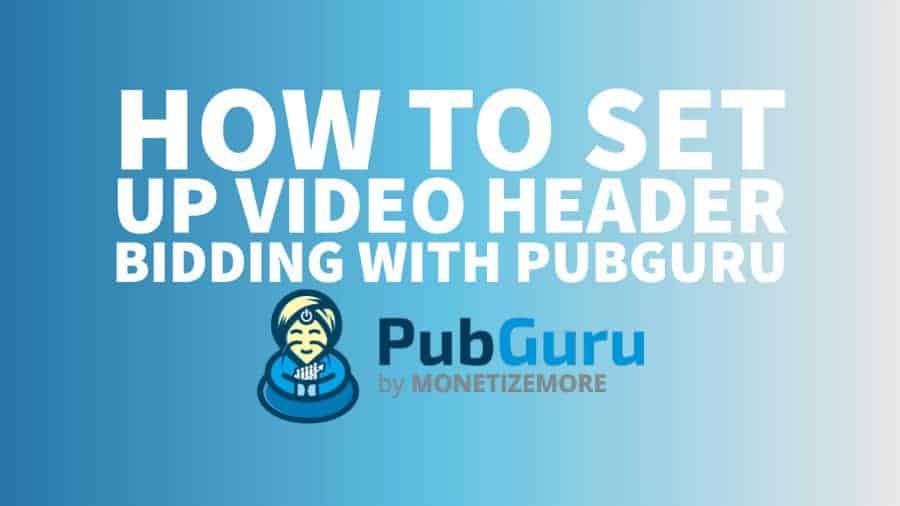
This post was most recently updated on February 5th, 2024
Video header bidding (VHB) has slowly been growing in the industry pipeline for the last few years. Publishers have come up with a variety of questions and strategies. We’ve developed this guide as a starting point for publishers looking to dive head first into VHB.
This is by far the most important aspect of all video advertising. Not having original content can be punishing in both social and search reach for your entire site. You can’t sell ad impressions if you don’t have traffic.
Do not just steal someone else’s video. Publishers who take someone else’s video and present it as their own, face significant liability under copyright and trademark laws. Not only is this unlawful in most countries, both Facebook and Google have worked extensively to diminish the reach of sites that engage in this practice.
Do not just wrap another site’s video content widget even if embedding is allowed. We’ve seen some sites try to run around the issue of video content production by wrapping public video players from websites like Youtube.
Tapping the Youtube video files is generally against Youtube’s terms of service and can get you blocked or banned from Google services. To get around this, the site in question loaded a video ad, and after the video ad was completed, instead of calling a video player for a video file, the publisher invoked the javascript API for Youtube to instantly load and autoplay a video.
Aside from potential legal liability and possible bans, the user experience of this technique is detrimental to the publisher’s brand. The user gets hit with the publisher’s ad, followed by the Youtube ad. Especially for short videos, this can do substantial damage to a publisher’s brand.
This is both a boon and a bane for publishers. Video production costs significantly more than articles/images. It is a bane because the upfront investment is higher making the barrier to entry higher.
It is a boon because the higher barrier to entry keeps others out. Either way, it costs significantly more to shoot, edit, publish, and traffic video than it does for articles/images, and revenue managers need to plan accordingly.
If the video is on an article page, there’s nothing more compelling than matching the video content to the article. Large mainstream news sites do this by showing clips of their anchors in the newsroom and footage from the scene of the news they’re describing.
Entertainment sites do this by making a video about 20 novel uses for a widget on an article page about that widget. Adding a how-to craft video to a gallery of funny cat pictures does not match.
Outstream typically runs as a partial fill unit with a high CPM floor on rendered impressions. The ad unit blinds itself down in whitespace to present a full video ad. Often the video blinds back upon completion. These can be implemented with VHB, but are prohibited by many bidders.
In-banner video (IBV) typically has much higher fill rates, but many of these are rife with ad fraud, as the unit is often being sold upstream as a video interstitial rather than IBV. These can also be implemented with VHB, but again, are prohibited by many bidders.
Many publishers prefer not to run either because of the impact on page weight and usability. Many implementations of these have hurt sites social and search reach by not following the Better Ads Standards.
Additionally, many bidders will not approve the use of their video PIDs for outstream or IBV. Some bidders take one look at the site, and if they see IBV or outstream or that the page content doesn’t match the video, they reject the site categorically because they don’t want the risk.
For these bidders, matching the page content and the video is imperative. Without a match, these bidders assume all videos on the site are just IBV or outstream.
We’ve seen a few of these pop up, where the vendor loads a widget that shows a video provided by the vendor (not the publisher) and periodically runs video ads. The problem here is that most large video demand sources will not approve these for video ads. This content tends to be syndicated or stock video that’s mostly or entirely irrelevant to the page, and the vendor is just cycling VPAID auctions. Either that or it’s one of these widgets that extracts a view lines of text from the article and superimposes the text on stock photos in a video file — it’s extremely low quality video content and most bidders want no part. Furthermore, these are not trafficked as video tags and are generally not compatible with any VHB platform.
The cheaper option for publishers looking to get their feet wet is videoJS. JWPlayer has significantly more features but comes with a much higher price tag. Our VHB solution is compatible with both.
Make sure you’re prepared to run JWPlayer or videoJS directly though as some other platforms implement these in their stack, and the proprietary wrappers are often not compatible with header bidding.
With our sophisticated video header bidding technology, publishers don’t need to write the entire video code. Just use the PubGuru video div to call the player and run ads without any further efforts.
<div class="pg-video" src="//some-path-to-video-file" id="ad-unit-slot"> </div>
Let’s say, the site uses JWPlayer. Instead of adding the player code inside the script, the publisher can add them to a single div ID.
Remove this:
<div id="site-video-player" data-tech="jwplayer-platform"></div>
<script> jwplayer("site-video-player").setup({ "playlist":"https://content.jwplatform.com/v2/media/abCDef?recommendations_playlist_id=123abc4"}); </script>
and replace it with:
<div id="site-video-player" class="pg-video" playlist="https://content.jwplatform.com/v2/media/abCDef?recommendations_playlist_id=123abc4"></div>
For the videoJS player, you can use:
<div id="tt-video_html5i" class="pg-video" data-tech="videojs" src="https://abc.com/system/watch-video/2/720/174.mp4?123456"> </div>
You’ll typically need a content delivery network (CDN). This can come in the form of S3+Cloudfront from Amazon Web Services, the JWPlayer CDN if you opt for their video platform or other CDN service providers like Akamai.
Your PubGuru advertising operations team will provide you with the video tags to place on your site. Put this up on a test page not normally accessible or linked to by other pages on your site.
Most implementations work on the first try, but sometimes publishers are running modules that interact negatively with the VHB stack. You don’t want to be trafficking broken ad tech on the bulk of your traffic.
Want to run video header bidding on your website? Sign up to MonetizeMore today to get started!

David Loschiavo is the Chief Product Officer of MonetizeMore. He believes artificial intelligence & machine learning, coupled with technology available to everyone, will change the world for the better and forever.
10X your ad revenue with our award-winning solutions.